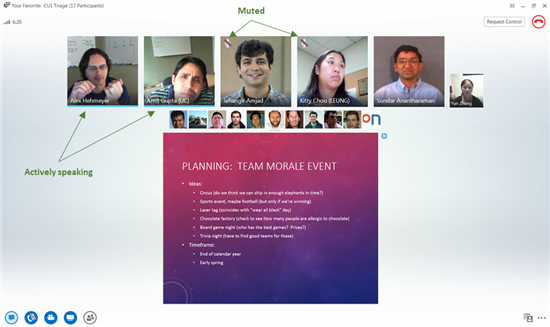Are you a manager who has always wanted to collaborate in real time with your customers in remote locations? Or have you always thought it would be a good idea to communicate with your colleagues living and working in different cities or even, countries, all at the same time? If so, you are not alone…
Most companies have invested heavily in video conferencing capabilities so that their employees and customers can collaborate and talk, as well as see each other in real time…And one of the most popular platforms they have used is the Skype/Lync Solution.
Why users love Skype/Lync
So, as they say, let’s talk…But first, it’s important to know why so many people love the Skype/Lync based video platform. Well, the answer is very simple – it is user friendly and simple to operate. And that’s not all! You can chat, share data, have a voice call, have a video call and everything else, all from one platform. Besides being hassle-free, you can also use this one platform for both your personal and your business communication.
One of the biggest advantages with Skype/Lync is that it does not add up to substantial costs and you can pay as you go, with you being charged based on your usage. However, is your basic laptop with Skype good enough for real-time business collaboration? The answer would be a “No”. So, how can you collaborate using video in real time using the Skype/Lync solution without investing too much money? Read on…
The enterprise-grade vs. consumer quality conundrum
Most meeting, conference, or huddle rooms have a display device for viewing presentations. This device can be a projector, an LED display, or an LCD display, depending on the size of the room and the seating capabilities. You can easily use these same display devices for Skype/Lync video conferencing. The latter works perfectly for small groups of 4 to 6 people.
Also, enterprise video conferencing solutions have been available for almost 30 years, and many businesses, such as yours, have made significant investments in video conferencing deployments. Most of these deployments are room-based video conferencing systems, using the International Telecommunication Union (ITU) H.323 standard.

These video conferencing systems are specifically designed for the conference room environment. They include cameras that have advanced optics, pan, tilt, and zoom (PTZ) capabilities, as well as a display, microphone, and speaker systems designed for large rooms.
Most of these companies would like to sync their existing and future room-based video conferencing equipment within their Lync environment. However, the video protocols and compression algorithms used by Lync are different from those used by the room systems sold by LifeSize, Polycom, and Cisco/Tandberg. This is why these systems do not natively integrate with Microsoft Lync. Which brings us to the different options available to those of you who want to merge these two visual communication worlds.
Set up a great multi-person Skype/Lync experience in your meeting room
Room systems are an important component of any video conferencing ecosystem, as well as an integral part of your company’s collaboration culture. However, Lync can communicate with only SIP-based room systems. This results in reduced video quality. To counter this, the video conferencing industry has come up with two very different approaches for connecting Lync users with conference rooms and telepresence systems. These are:
1) Support Microsoft’s protocols and algorithms directly within the room system itself.
2) Provide a Lync gateway to connect the island of Lync users with the island of traditional video conferencing devices.
Of the two, direct integration has many advantages. Some of them are:
Direct integration enables a plug-and-play solution.
To authenticate a device, you can simply use your Lync user name and password.
There is usually no additional cost for the endpoint hardware.
By directly registering devices to Lync your administrator can use Lync’s bandwidth management, directory management, and Network Address Translation (NAT) or firewall traversal capabilities.
Direct integration also eliminates the obvious costs associated with a separate Lync gateway.
The only extra cost you may incur during direct integration maybe for a software upgrade. There are also several Lync-certified cameras available that have a PTZ functionality.
Some of these cameras have an integrated kit of an additional microphone and speakerphone. These can easily connect with a Skype/Lync based PC or Laptop. Besides this, newgen Digital Signal Processors (DSPs) have an additional port of a USB interface. The latter connects to the Install sound infrastructure with a Skype/Lync-based PC or Laptop.
So, get going to introduce or ramp up on the Skype/Lync platform in your company and enjoy seamless video conferencing the way it is supposed to be…Here’s to a happy video conferencing experience!
For more information on designing a Skype/Lync video conferencing solution,
contact Actis at 022-30808080 or write to contact@actis.co.in
(Content and Images credit: www.microsoft.com)



1 Comment
Comments are closed.